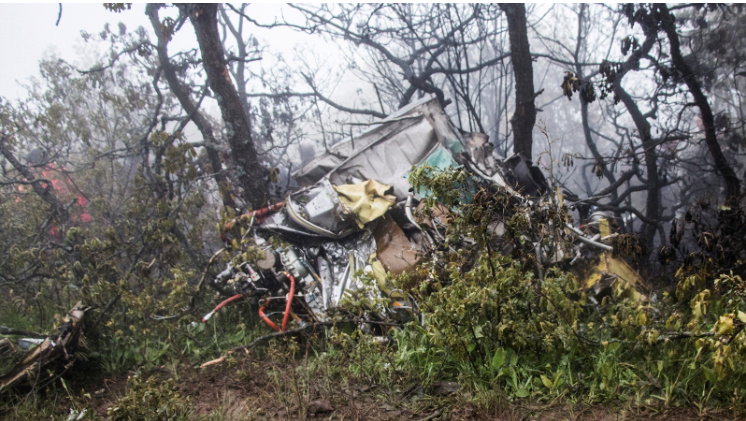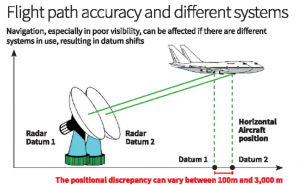ForumIAS announcing GS Foundation Program for UPSC CSE 2025-26 from 18th June. Click Here for more information.
On May 19, 2024, the fatal crash of a Bell 212 helicopter, flying the President of Iran, Ebrahim Raisi, and Foreign Minister, Hossein Amir-Abdollahian, has drawn our attention towards helicopter crashes. The fatal crash of the Iranian president’s helicopter is the latest in a series of helicopter crashes involving politicians and other high-ranking officials, over the past several decades.

What have been the famous helicopter crashes?
Helicopter crashes have resulted in the death of major personalities, both globally and in India. Mentioned below is the list of famous personalities who died in the helicopter accidents-
| January 2024- Former Chilean President Sebastian Pinera | Former Chilean President Sebastian Pinera died from drowning after a helicopter crash in a lake in the south of the country on February 6, 2024. |
| December 2021- CDS General Bipin Rawat | India’s top most defence official, Chief of Defence Staff (CDS) Gen Bipin Rawat, his wife, and twelve other defence officials died in a chopper crash near Tamil Nadu’s Coonoor on December 8, 2021. |
| April 2011- Arunachal Chief Minister, Dorjee Khandu | Arunachal Pradesh Chief Minister Dorjee Khandu died in a helicopter crash on April 30, 2011. He was found dead in Luguthang, near the China border. |
| September 2009- Andhra Pradesh Chief Minister, Y S Reddy | Andhra Pradesh Chief Minister Y S Rajasekhara Reddy was found dead after a helicopter went missing on 3 September 2009. The senior Congress leader, popularly known as YSR, was flying a Bell 430 to Chitoor district in Andhra Pradesh. |
| March 2005- Haryana cabinet ministers, O P Jindal & Surendra Singh | O P Jindal, Haryana’s then-power minister, a noted industrialist, and state agriculture minister Surendra Singh were killed when the chopper carrying them developed a technical snag and went down near Saharanpur in Uttar Pradesh on March 31, 2005. |
| March 2002- TDP leader, G M C Balayogi | Lok Sabha Speaker and Telugu Desam leader GMC Balayogi died in a chopper crash on March 3, 2002, in Andhra Pradesh. An official probe revealed that the crash occurred due to poor visibility, when the pilot mistakenly landed on a pond thinking it was a land surface. |
| September 2001- Congress leader, Madhavrao Scindia | Madhavrao Scindia, a senior Congress leader, and a former union cabinet minister, was killed in a Cessna aircraft crash on September 30, 2001, while travelling to Kanpur in Uttar Pradesh to address a public rally. |
| August 1988- President of Pakistan, Muhammad Zia-ul-Haq | President of Pakistan, Muhammad Zia-ul-Haq died in a plane crash on 17th August 1988. |
| June 1987: Prime Minister of Lebanon, Rashid Karami | Prime Minister of Lebanon, Rashid Karami was killed on June 1, 1987, when a bomb exploded aboard a military helicopter. The Interior Minister Abdullah Rassi and three of the other 12 aides and crewmen on the aircraft were injured in the incident. |
What are the reasons behind helicopter crash in India?
1. Unsafe and harsh weather conditions- Thick fog, high speed wind and heavy rainfall endanger the helicopter flight and landing safety. For ex- The helicopter accident of CDS Bipin Rawat was a result of unexpected change in weather conditions, which resulted in pilot’s spatial disorientation and subsequent crash.
2. Misjudgements induced by optical illusions- The visual and depth perception produced in fog and heavy rain, creates optical illusions. Several accidents have been caused due to misjudgements induced by these optical illusions.
3. Tweaking with the GPS system- GPS had improved the navigation in poor visibility conditions. Military aircrafts in order to avoid enemy interception or identification have started tweaking with the GPS System. This has increased the vulnerability of helicopter flights to fatal accidents.

4. Violation of rules of flight safety- Pilots have been indulging in violation of safety rules set by the Directorate General of Civil Aviation, the Airports Authority of India and airlines.
5. Pressure by the owners- There have been reported instances of crashes where the pilots have been arm-twisted into flying in dangerous weather conditions. For ex- There have been reported cases of undue pressure on the crew to fly despite bad weather conditions.
6. Mechanical Failure- Mechanical issues, such as engine failure, rotor malfunction, and other critical component failures, have also led to helicopter crashes.
What are the consequences and Impact of Helicopter crashes?
1. Fatalities- Helicopter crashes often result in significant fatalities of the most prominent politicians and leaders. For ex- Death of Iranian President, which carries the risk of domestic turmoil.
2. Economic Impact- Crashes can lead to substantial financial losses including the cost of the helicopter, legal liabilities, and compensations.
3. Environmental Damage- The Brazilian Rainforest Crash (2017) not only resulted in human casualties but also caused environmental damage due to fuel spillage and wreckage debris, affecting the pristine ecosystem.
4. Trauma and Psychological damage- Survivors of helicopter crashes often experience long-term psychological trauma, which includes post-traumatic stress disorder (PTSD). For ex- Survivors of the 2009 Hudson River helicopter crash required extensive psychological support.
What measures have been taken in India to avoid crashes?
DGCA Guidelines for flying VIP Choppers- New safety rules have been put in place for VIP operation of planes and helicopters to avoid mishaps like the one which killed former Andhra Pradesh Chief Minister YSR Reddy.
1. New definition of VIP Flight- The new rule says that a VIP flight would mean having amongst the passengers any one of the eight categories of dignitaries. The categories include the Lok Sabha Speaker, Rajya Sabha Deputy Chairperson, Cabinet Ministers, Chief Justice of India, 1Governors, Chief Ministers, State Cabinet Ministers and the SPG protectees who enjoy ‘Z-plus’ category security.
2. Strict adherence to weather advisories– No flight would be allowed to be operated when “weather conditions are not conducive to safe operations”, and every VIP flight would be operated with “a multiple crew composition”.
3. Pilot experience requirement- For helicopter pilots, the commander should possess licenses, with 2,000 hours of flying experience including 500 hours as Pilot in Command (PIC) on the same aircraft type. They should also have at least 10 hours of night flying experience.
4. Registration of State aviation PSUs- Aviation departments of state governments or aviation divisions of PSUs need to apply to the DGCA for undertaking aircraft operations with a fee of Rs one lakh. State departments and PSUs, would also have to apply to the DGCA for importing of planes or helicopters. The granted permits which would be renewable every two years depending on fulfilment of all necessary conditions.
5. Aircraft maintenance and repairs- The aircraft should be fitted with all suitable equipments needed for instrument flying and pilots should hold valid instrument ratings.
6. Review of SOPs- Helicopter operators of state governments and public sector units need to review their Standard Operating Procedures on various issues. These include VIP sorties over difficult terrains like dense forests, hilly areas and large water bodies.
The DGCA, India’s civil aviation regulatory body, has established comprehensive regulations for helicopter operations. These include requirements for airworthiness, operational safety, and pilot licensing. The DGCA conducts regular safety audits of helicopter operators to ensure compliance with safety standards.
| Technological Advancements | Terrain Awareness and Warning Systems (TAWS)- The DGCA mandates the installation of TAWS in helicopters to prevent Controlled Flight Into Terrain (CFIT) accidents. Helicopter Flight Data Monitoring (HFDM)- HFDM systems are used to continuously monitor and analyse flight data, helping to identify and rectify potential safety issues proactively. Weather Monitoring Systems- Advanced weather monitoring and forecasting tools are used to avoid adverse weather conditions that could lead to crashes. |
| Pilot Training and Certification | Comprehensive Training Programs- Pilots undergo rigorous training programs, including simulation training, to handle various in-flight scenarios and emergencies. Regular Re-certification- Pilots are required to undergo regular re-certification to ensure their skills and knowledge are up-to-date with the latest safety protocols and technologies. |
| Operational Guidelines | Standard Operating Procedures (SOPs)- Operators must develop and adhere to SOPs for various phases of flight, including takeoff, cruising, and landing. Pre-Flight Inspections- Comprehensive pre-flight inspections are mandatory to ensure the helicopter is in optimal condition before each flight. |
What should be the Way Forward?
1. Accountability on the part of helicopter operators- Kaushik Committee reports of 1991 and 2005 called for more accountability on the part of aircraft operators. This has to be followed in letter and spirit.
2. Advanced Weather Monitoring- The focus must be to improve weather monitoring and forecasting tools to avoid flying in adverse conditions.
3. Technological Innovations- The Implementation of better navigational aids, crash-resistant fuel systems, and enhanced communication tools, will also help in averting these crashes.
4. Regulatory Oversight- Stronger regulations and oversight by aviation authorities will ensure compliance with safety standards.
| Read More- The Hindu UPSC Syllabus- GS 2- Government Policies and intervention |



